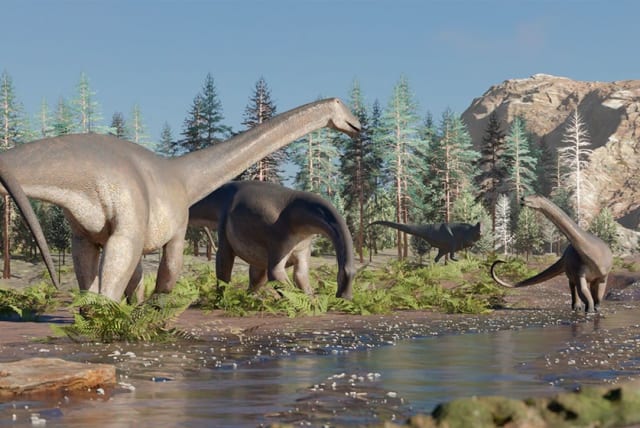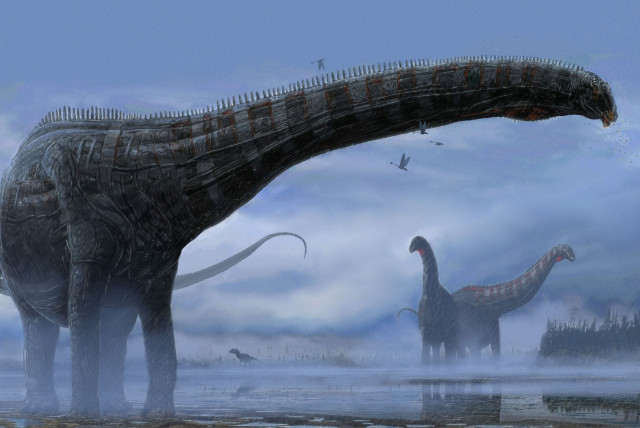New species of dinosaur discovered in Argentina

Named Sidersaura marae, a new species of long-necked herbivorous dinosaur was discovered in the province of Neuquén, Argentina.
A new species of long-necked herbivorous dinosaur was discovered in the province of Neuquén, Argentina, paleontologists from Argentina’s National Scientific and Technical Research Council (CONICET) reported on Wednesday.
The paleontologists published their research in the peer-reviewed paleobiology journal Historical Biology. Named Sidersaura marae, the dinosaur was a sauropod, a dinosaur belonging to the family of long-necked dinosaurs that includes diplodocus, brachiosaurus, and argentinosaurus.
The fossil remains of four different specimens were found in the town Cañadón de Las Campanas, where there have been many paleontological findings of Rebbachisauridae fossils.
Sidersaura's main characteristics
Belonging to the rebbachisauridae family, Sidersaura follows many of its prime traits. These dinosaurs were characterized by their wide snouts, which facilitated feeding on low vegetation, and by the pneumatic hollow bones of their spines, which reduced their considerable neck weight.
Although rebbachisauridae were not striking in their size, Sidersaura is the largest species in the family. Its mass is estimated to be 15 tons, and its length between 18 and 20 meters.
Scientists named the new-found dinosaur Sidersaura following its particularity – its star-shaped tail bones, sider meaning star in Latin.
Importance of the Sidersaura finding
Hailing from the Cretaceous period, the rebbachisaurid was key in its ecosystems and disappeared 90 million years ago in a mass extinction event that also claimed the carcharodontosaurids, the largest carnivorous dinosaurs in the world at the time.
Sebastián Apesteguía, CONICET researcher, director of the Paleontology Area of the Félix de Azara Natural History Foundation and one of the authors of the research, noted the importance of the new species. "Sidersaura is one of the last rebbachisaurids, but it also belongs to an ancient lineage in evolutionary terms. This shows us that at the end of their period, some of the rebbachisaurids of the early times survived and that these were the largest of their group, given that they could reach nearly 20 meters in length."
Jerusalem Post Store
`; document.getElementById("linkPremium").innerHTML = cont; var divWithLink = document.getElementById("premium-link"); if (divWithLink !== null && divWithLink !== 'undefined') { divWithLink.style.border = "solid 1px #cb0f3e"; divWithLink.style.textAlign = "center"; divWithLink.style.marginBottom = "15px"; divWithLink.style.marginTop = "15px"; divWithLink.style.width = "100%"; divWithLink.style.backgroundColor = "#122952"; divWithLink.style.color = "#ffffff"; divWithLink.style.lineHeight = "1.5"; } } (function (v, i) { });

